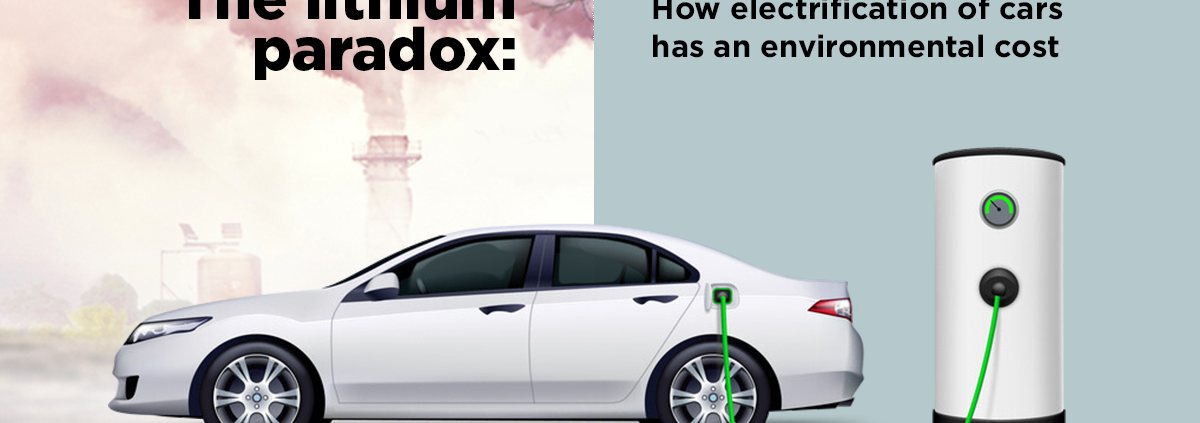As the world grapples with the need to reduce the dependence on fossil fuels-based transport, alternatives such as electric vehicles have emerged as the silver bullet. But things are not always as they seem — electric vehicles depend on lithium-ion batteries, for which lithium has to be extracted from the earth. That invites all the environmental degradation associated with mining.
Lithium is the lightest known metal on earth and is widely used in electric devices, from mobile phones and laptops to cars and aircraft. Dubbed “white gold”, this metal’s global demand is set to rise over 40 times by 2040(1), driven mainly by the shift to electric vehicles (EVs). The mad rush towards EVs is fraught with consequences, and it will do the world a lot of good to take a step back and ponder the implications of embracing electric cars and their mainstay, lithium.
Lithium extraction and the damage to the environment
In spite of being a relatively new industry, lithium mining already has a proven track record of land and water pollution, ecosystem and biodiversity destruction, and violations against indigenous communities. The reasons are par for the course because extracting any resource from the earth almost always accompanies an environmental cost or risk.
Mining, in general, causes environmental issues such as soil degradation, water shortage, loss of biodiversity, damage to natural habitats, the release of carbon dioxide into the air, an increase in global warming, and so forth. The mining of lithium is not without such detrimental impacts.
Lithium is extracted through brine mining, which involves extraction from underground saltwater reserves. The process involves pumping saltwater to the surface, where it is evaporated. In the process, lithium and other minerals are left behind.
Mining this metal inevitably harms the soil, causes air contamination and land degradation, and pollutes local water sources. There is yet another problem: Lithium mining is a water-intensive process and, at times, comes at the expense of water available for consumption and irrigation. Almost 2.2 million litres of water are needed to produce just one tonne of lithium(2). To put that into perspective, the battery pack of a typical electric car needs as much as eight kilograms of lithium.
As the extraction gathers pace, locations where this metal is found are facing a dilemma, with local communities complaining of potential strain on water infrastructure. More than 50% of the current production of lithium is taking place in regions that are already grappling with the impact of global warming and water shortages. Social unrest is on the rise in countries such as Chile, Argentina, and Bolivia, where lithium is found in large amounts and mining is underway.
A stitch in time saves nine
There are no two ways about the fact that lithium mining is environmentally and socially destructive. However, it is being viewed through the prism of comparative analysis with the environmental cost of fossil fuel production. Ostensibly, lithium mining is less damaging than extracting fossil fuels. So, concerned authorities and intergovernmental organizations must ensure that lithium is extracted in a socially and environmentally responsible manner, with proper regulations that address the concerns of the communities impacted by the mining process. It is paramount that such measures are put in place before EVs become more mainstream.
- https://www.iea.org/reports/the-role-of-critical-minerals-in-clean-energy-transitions/executive-summary
- https://energy.economictimes.indiatimes.com/news/power/lithium-discovery-important-for-indias-ev-push-but-mining-poses-serious-environmental-risks-experts/98209189




